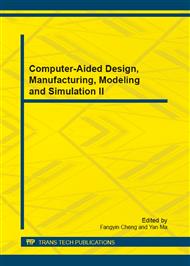p.179
p.184
p.189
p.194
p.199
p.204
p.208
p.213
p.219
A Real-Time Microseismic Monitoring System Based on Virtual Instruments
Abstract:
Many geologic hazards, such as rock burst coal and gas outburst, have an inevitable connection with microseismic phenomena in rock mass. In order to provide accurate evidence of underground safety monitoring, inspecting microseismic signal is a good way to make sure the range and the level of underground rock breaking. Previous microseismic system using DSP or singlechip can’t obtain the desired data collection, neither for the achievement of advanced algorithm. The real-time microseismic monitoring system realizes the acquisition of multiple microseismic signals and uses wavelet transform algorithm, which gives full scope to the advantages of virtual instruments. The monitoring result was very similar to actual rock burst and the error of orientation results was minor to prescriptive upper limit, which means this new system completes the monitoring of real-time microseismic emission effectively.
Info:
Periodical:
Pages:
199-203
Citation:
Online since:
December 2012
Authors:
Price:
Сopyright:
© 2013 Trans Tech Publications Ltd. All Rights Reserved
Share:
Citation:


